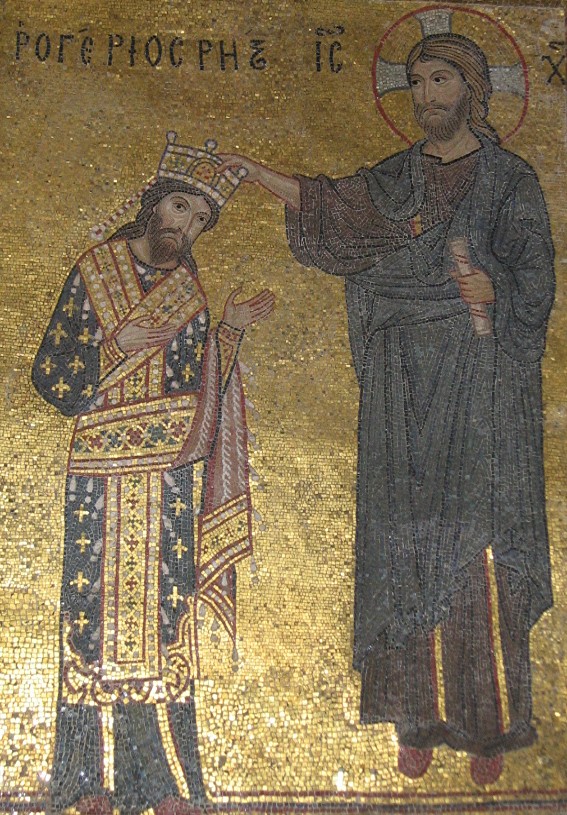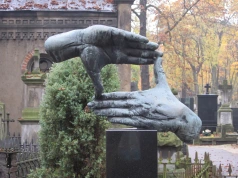• Katowice: New-Old Academy of Music
Friday, 29 April 2016 Leave a comment
Earlier this month I paid a visit to the Szymanowski Academy of Music in Katowice, at the invitation of Marcin Trzęsiok and Eugeniusz Knapik, to give a lecture during their annual open days. There was a book launch (a collection of essays, Edvard Grieg and his Times in two versions – one in English, one in Polish – edited by Wojciech Stępień), student papers, two guest lectures, a choral-instrumental concert and a concert of new pieces by student composers. It was all very stimulating and I thoroughly enjoyed my three days with the staff and students, meeting up with old friends (such as Arkadiusz Kubica of the Silesian String Quartet) and making new ones.
Adding the New
Although I have seen the Academy buildings before (it was where the reception was held after Górecki’s funeral in 2010), I was once again taken aback by the magnificence of the old part and stunned by the brilliant added space designed by Tomasz Konior. The new part – the Centre of Science and Musical Education – was completed in 2007. It houses a new concert hall (where the student compositions were performed), a new library (which furnished me with important research material) and spacious accommodation for visitors. They are all linked by a glass atrium, a concourse where staff, students and visitors can mingle and enjoy refreshments from the cafe (it does good breakfasts!). The following links give some idea of these new facilities, inside and outside, but before I mention the latest project, inaugurated a few days before my arrival, here are a few photos of my own to add to the gallery.
You get a great view of the north front of the building from the train as it draws into the main Katowice station:
 The building’s origins in 1901 as the Building Trades School can be seen in the design of the shield above the central window (behind which is the Szabelski Auditorium):
The building’s origins in 1901 as the Building Trades School can be seen in the design of the shield above the central window (behind which is the Szabelski Auditorium):
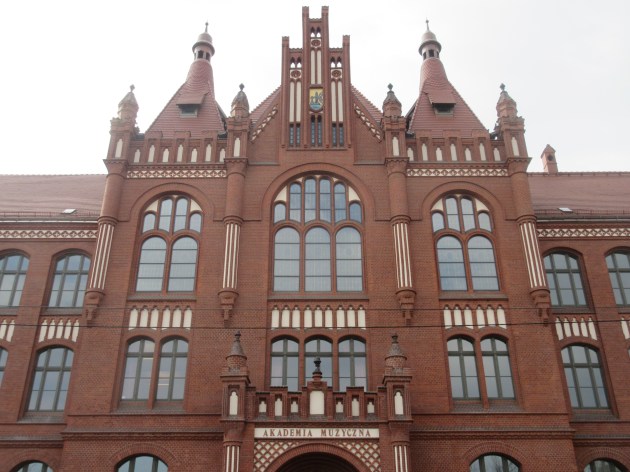 The week before I arrived, the Music Academy awarded one of its rare and therefore coveted Honorary Doctorates to the former editor-in-chief of PWM, professor at the Kraków Music Academy and distinguished Polish musicologist, Mieczysław Tomaszewski. At the age of 95, he is the seventh and oldest in the line of recipients, following Henryk Mikołaj Górecki (2003), Krystian Zimerman (2005), Andrzej Jasiński (2006), Stanisław Skrowaczewski (2012), Wojciech Kilar (2013) and Martha Argerich (2015).
The week before I arrived, the Music Academy awarded one of its rare and therefore coveted Honorary Doctorates to the former editor-in-chief of PWM, professor at the Kraków Music Academy and distinguished Polish musicologist, Mieczysław Tomaszewski. At the age of 95, he is the seventh and oldest in the line of recipients, following Henryk Mikołaj Górecki (2003), Krystian Zimerman (2005), Andrzej Jasiński (2006), Stanisław Skrowaczewski (2012), Wojciech Kilar (2013) and Martha Argerich (2015).
 The north-east corner of the Academy shows something of how the old and new buildings are combined:
The north-east corner of the Academy shows something of how the old and new buildings are combined:
 And from the south-east corner (with my guest apartment occupying the first four windows of the top floor and full depth of the eaves):
And from the south-east corner (with my guest apartment occupying the first four windows of the top floor and full depth of the eaves):

The brickwork on the new Centre, such as around the steps into the atrium, is alive with little details:

The eastern entrance to the atrium, uniting the new and the old:

Inside, the access corridor for performers alongside the new concert hall has some fun silhouettes:

 There is also a western entrance to the atrium, and from a hundred metres away the western side of the site shows the new Centre linking the front building with another old edifice (whose venerable stairwell is adorned with portraits of the recipients of the Academy’s honorary doctorands).
There is also a western entrance to the atrium, and from a hundred metres away the western side of the site shows the new Centre linking the front building with another old edifice (whose venerable stairwell is adorned with portraits of the recipients of the Academy’s honorary doctorands).

Renewing the Old
The Auditorium in the old Music Academy building has just been rejuvenated thanks to a programme of financial resources injected by the EU, Norway and Poland and of an academic partnership with the Grieg Academy and the University of Bergen (hence the book launch and shared personnel in the the first concert during my visit).
The old auditorium was once the temporary home for the Silesian parliament in 1922-29:

By the time that Górecki and his future wife Jadwiga came to study at the Academy, in the second half of the 1950s, and right through to recently, the murals had been whitewashed and the pipes of an organ obscured the eastern wall. Here it was that all the concerts took place, including Zimerman’s final undergraduate recital three years after winning the International Chopin Competition in Warsaw in 1975.

Now, after thorough restoration, the Gothic glory of Emil Noellner’s murals can be seen again. Well, almost. Here is that same wall on restoration, without the organ pipes and curtains.

It shows, from the edges inwards, the castle at Oleśnica near Wrocław (then Breslau) on the left and the wooden church once at Mikulczycach (right), subsequently moved and then destroyed by fire. Inside them are the figures of an architect (left) and builder (right). In the centre is St Hedwig of Silesia.
The only compromise within the whole scheme was the wish to install a new, less sprawling organ. And I have to say that its design and scale makes the new instrument look totally at home:
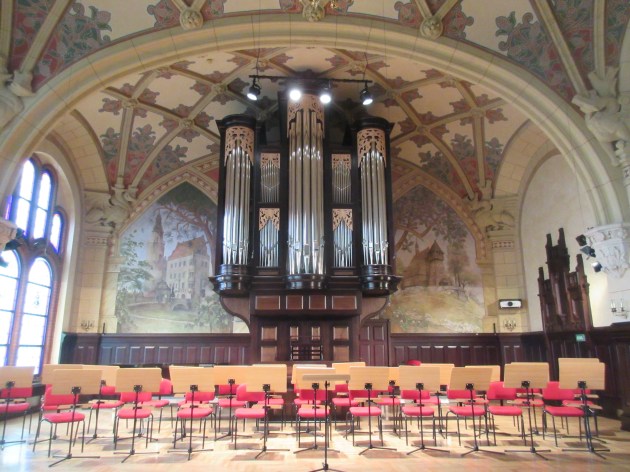
The trouble is that Saint Hedwig, the architect and the builder have disappeared. But I did spot the architect’s foot poking out from behind the organ case on the left-hand side.
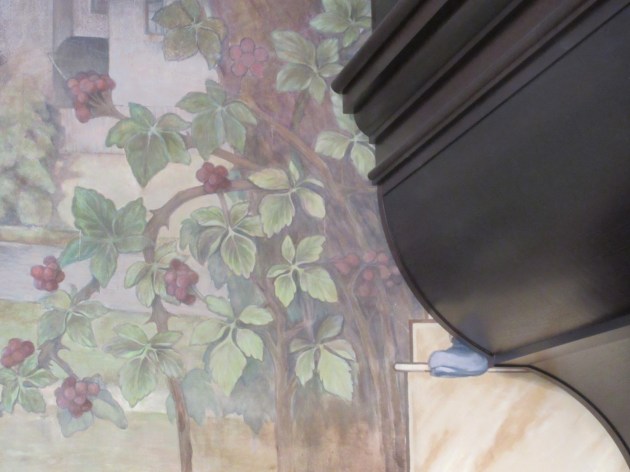
It’s a pity to lose the centrepiece of this mural. Maybe the Academy can find a place elsewhere in the building to put up a replica of the missing section. The acoustics, both for choir (with and without organ) and for instrumental ensemble, were excellent and the renovated Szabelski Auditorium, named after the most important Katowice composer since independence and the teacher of Górecki, is an atmospheric addition to the facilities. If the murals don’t grab your attention, the stained-glass images in the three large windows overlooking the front of the building, of six Polish composers up to and including Szymanowski, will remind you of the national musical heritage. All that’s needed now is space for six more recent Polish composers. Any suggestions?






 Wightman has now published – and it would appear to be online only – the first volume of a series devoted to the composer’s letters: Karol Szymanowski: Correspondence, Volume 1: 1902-1919. There are 401 letters in the volume and it is available from
Wightman has now published – and it would appear to be online only – the first volume of a series devoted to the composer’s letters: Karol Szymanowski: Correspondence, Volume 1: 1902-1919. There are 401 letters in the volume and it is available from 

